Is That Glass Vase a Treasure? Your Guide to Identifying Murano Glass
I still remember the first time I held a piece of authentic, master-crafted glass. It was a drinking glass, and honestly, it was much heavier than I expected. The piece felt alive in my hands, with faint, almost invisible lines that traced the maker’s process. When I held it up to the light, the layers of submerged color seemed to shift and breathe. That was years ago, back when I was just starting to learn about decorative arts, and that single moment taught me more than any textbook ever could. Murano glass isn’t just a pretty object; it’s a physical record of incredible skill, history, and even chemistry, all captured in a moment of fire and breath.
In this article
So many of us have a piece of colorful glassware sitting on a shelf, maybe something inherited from a grandparent. And you can’t help but wonder… is it special? Is it a cheap tourist souvenir or a hidden gem? The answer isn’t always simple, and it requires you to look beyond just the surface beauty.
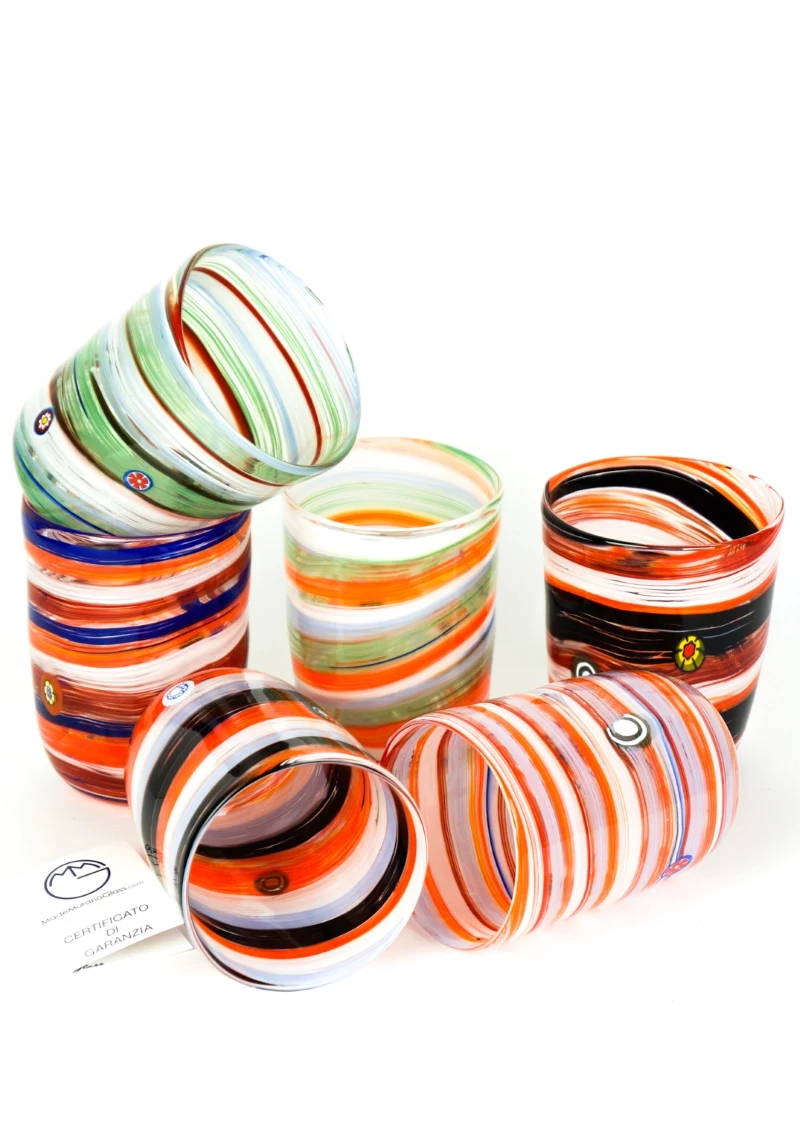
You have to understand the material, the hands that shaped it, and the subtle clues it holds. For centuries, the glassmakers from the island of Murano, near Venice, fiercely guarded their craft, making their work the most sought-after in the world. In this guide, I’ll share what I’ve learned from years of handling and studying these pieces. We’re not just looking for a price tag; we’re learning to appreciate the deep craft behind every single item.
The Magic Mix: What Makes This Glass Different
First off, let’s get one thing straight: this isn’t the same stuff your windows or beer bottles are made from. The recipe itself is a core part of its identity. The main ingredient is silica, which is basically super-fine, pure sand. Traditional artisans used a specific kind of sand that was low in iron, which is the secret behind the glass’s famous clarity, often called cristallo.
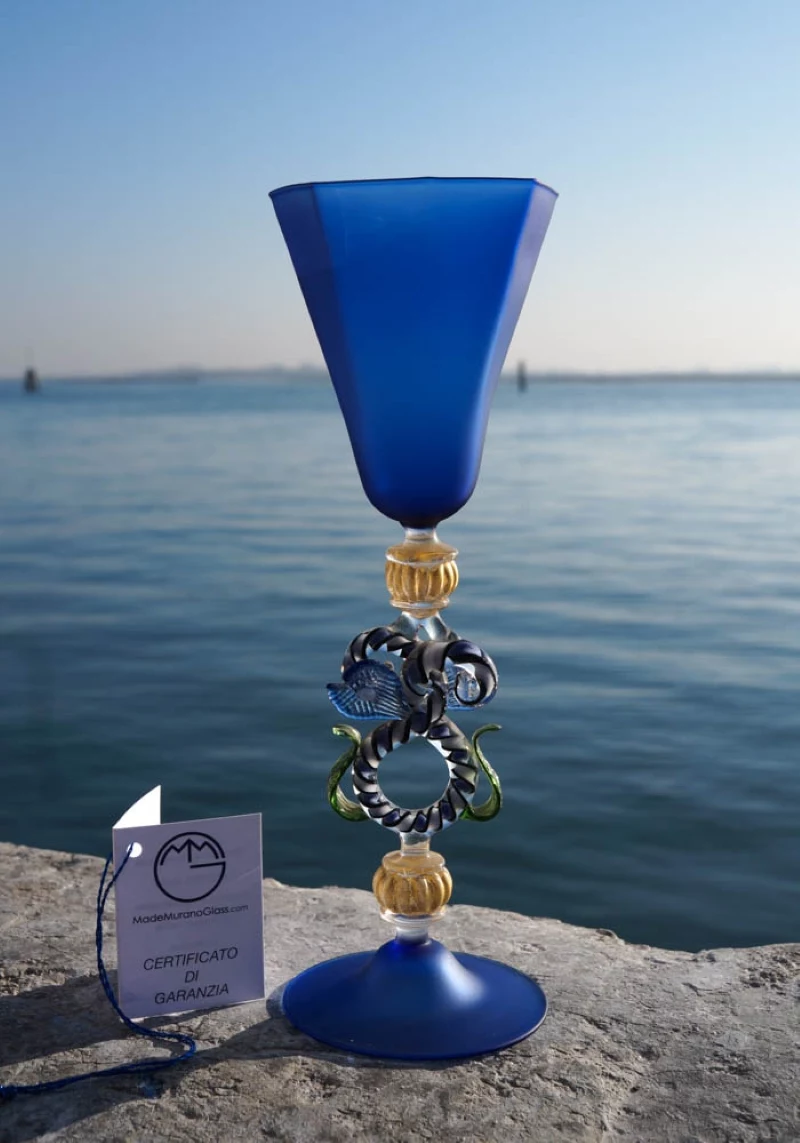
But silica has a ridiculously high melting point (over 3,000°F). To make it workable in a furnace, you need to add a “flux” to lower that temperature. The pros used soda ash, which allows the silica to melt at a more manageable temperature. Finally, a stabilizer like lime is added to make the finished glass durable and, you know, not dissolve in water. This basic silica-soda-lime formula is the foundation, but the real artistry is in what happens next.
The colors, by the way, aren’t painted on. They’re created by adding metal oxides to the molten glass—a precise science that was once a state secret.
- Deep Blues: These come from cobalt oxide.
- Rich Greens: Copper oxide is the key here. In a special process, it can also produce a fiery red.
- Opaque White (Lattimo): This milky white is made by adding tin.
- Purples: Manganese creates those lovely amethyst tones.
- Ruby Red (Rubino Oro): This is the really special one. The secret ingredient for true ruby red is literally gold. Adding gold chloride to the mix creates an unmatched, deep red color.
Understanding this explains why the colors in genuine Murano glass look so deep and integral. They aren’t a surface treatment; they’re part of its very DNA.
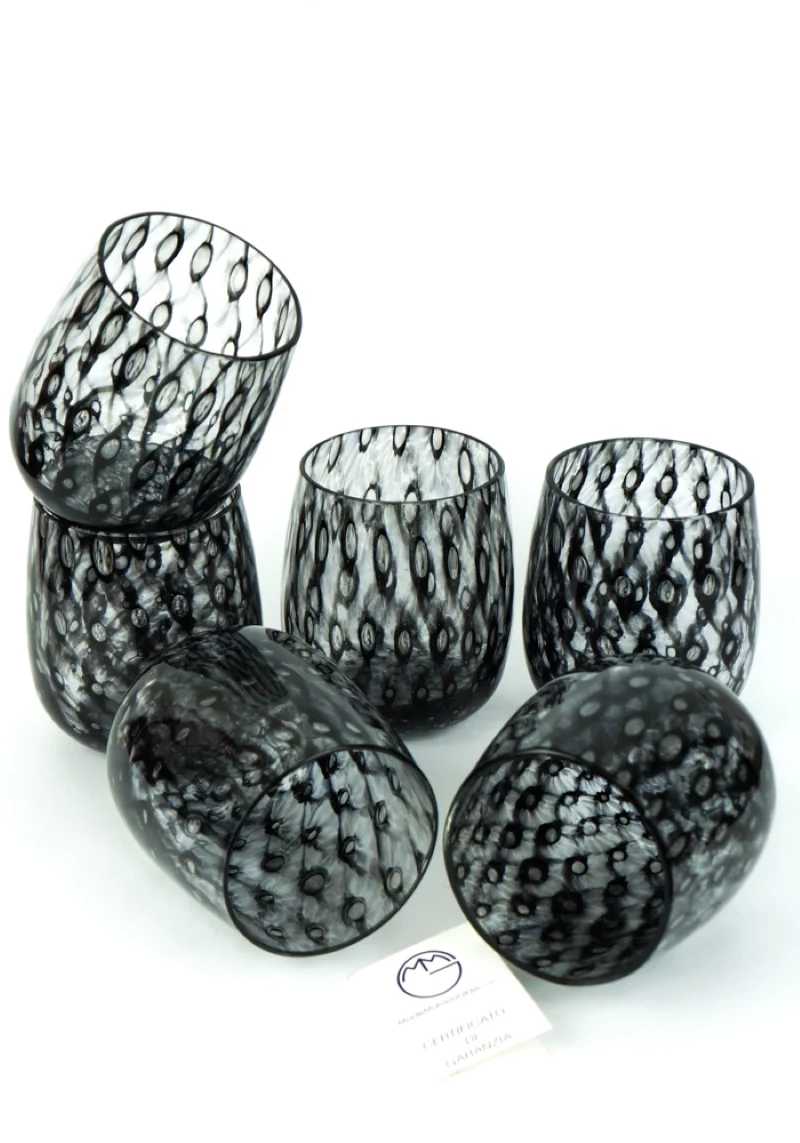
Reading the Clues: Techniques of the Masters
When an expert looks at a piece of glass, they’re not just seeing a vase. They’re reading a story told through technique. A master glassblower, or maestro, spends a lifetime perfecting these skills. Here are some of the most important ones to know.
Millefiori (Thousand Flowers)
This is probably the most famous technique, but it’s often misunderstood. It’s a type of mosaic work where the artist creates long, thin rods of glass called canne, each with a tiny pattern (like a star or flower) running through its center. These rods are sliced into little discs called murrine. Hundreds of these are arranged in a mold, fused together with heat, and then blown into the final shape. A key sign of quality is the clarity of the patterns and the tightness of the seams. Cheaper knock-offs often have blurry, messy designs and feel surprisingly light for their size.
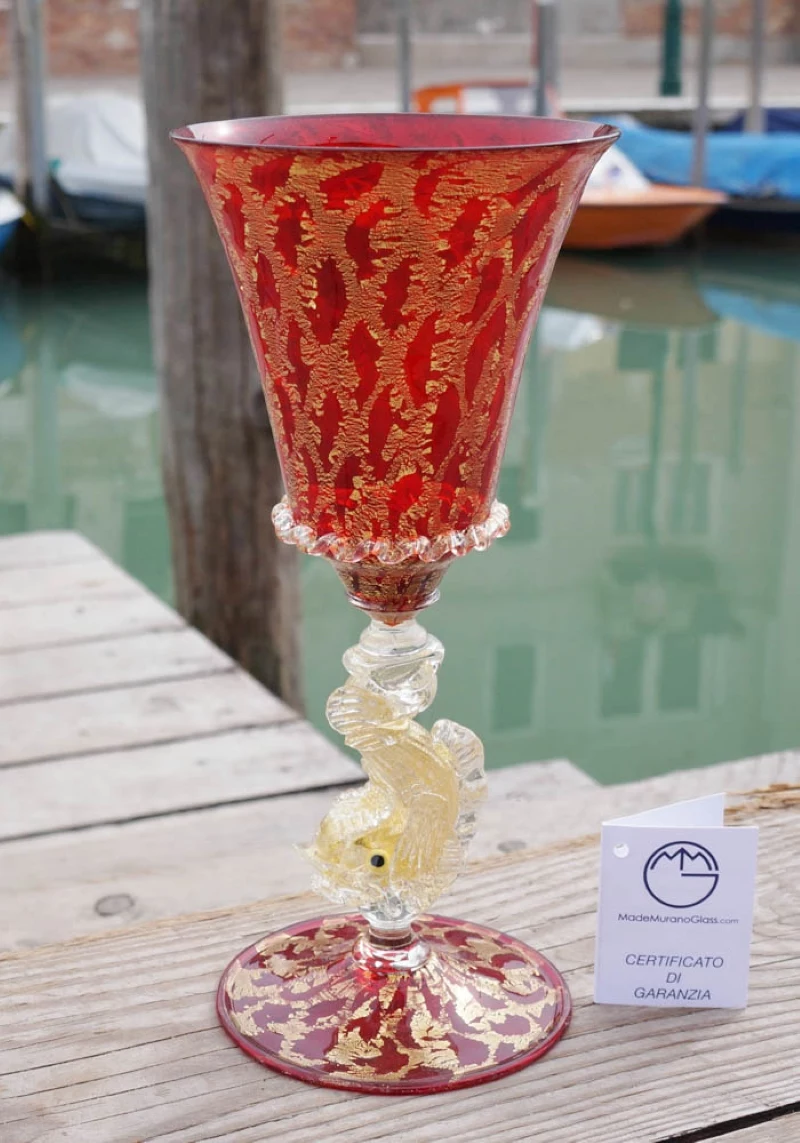
Filigrana (Filigree)
This technique creates delicate, lace-like patterns inside the glass itself. The most impressive variation is called reticello, or “little net.” It involves fusing two sets of glass rods twisted in opposite directions. The true mark of an expert is a tiny, perfectly trapped air bubble inside each little diamond of the net. I was once taught by a colleague to use a magnifying glass to check for these bubbles—their presence is an almost certain sign of authentic, high-quality work.
Sommerso (Submerged)
This technique, which became very popular in modern design, is all about layering colors. A finished piece of colored glass is dipped into a different molten color, and maybe even a third. The skill is in creating crisp, distinct layers without the colors bleeding together. The outer layer is almost always crystal clear, acting like a lens. A big clue for sommerso is the weight; because of all those layers, these pieces are often very thick and heavy.
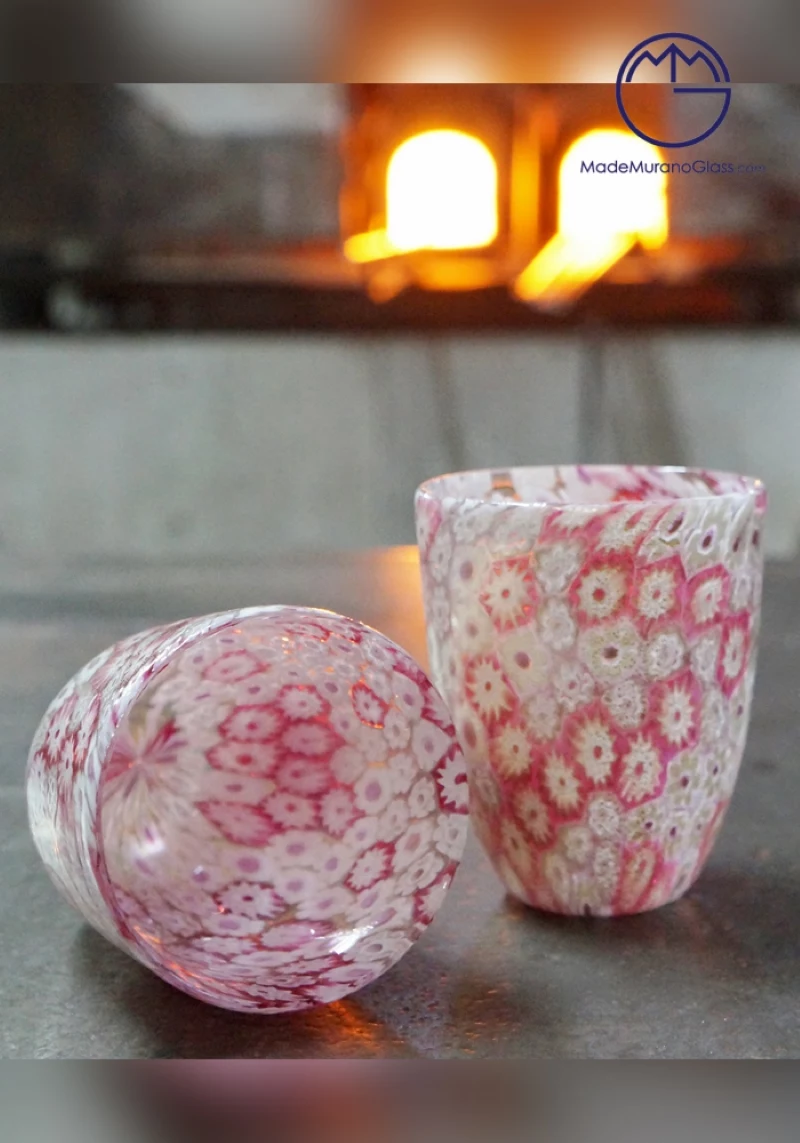
Bullicante (Controlled Bubbles)
This technique creates a stunning pattern of symmetrical, bursting bubbles. The glassblower rolls hot glass over a metal mold with spikes, creating indentations. Then, it’s covered with another layer of glass, trapping air in each little pocket. As the piece is blown, the air expands into beautiful, uniform bubbles. In lower-quality imitations, the bubbles will look random and uneven.
The #1 Clue: Check the Bottom!
Okay, lean in for the most important tip I can give you. If you do nothing else, flip the piece over and look at the base. A genuine, hand-blown piece of glass was once attached to a metal rod called a pontello. When it’s finished and snapped off the rod, it leaves behind a mark. This is called the pontil mark, or pontile.
It will be a rough, unpolished spot, sometimes ground down a bit but rarely perfectly smooth. It’s like the glass’s belly button! Mass-produced, molded glass will have a perfectly smooth, machine-finished bottom. Seeing a pontil mark is one of the strongest indicators that you’re holding a piece of hand-crafted glass.
Your 5-Minute Inspection Checklist
Got a piece in front of you? Here’s a quick way to assess it:
- Check the Base: First thing’s first. Look for that rough pontil mark. No mark? It’s likely machine-made.
- Feel the Weight: Does it feel substantial, even a bit heavy for its size? That’s a good sign. Fakes often feel flimsy and light.
- Look at the Colors: Are they deep inside the glass, or do they look painted on? Real artistry has depth and richness.
- Check for Imperfections: Hand-made items are never perfect. Look for slight asymmetry, the tiny bubble in a reticello piece, or minor variations. Perfect symmetry can be a red flag for a machine-made object.
- Look for a Signature: While many older pieces aren’t signed, more recent ones might be. Look for a faint, scratched signature (diamond-point) or a frosted-looking one (acid-etched). Be wary of generic ‘Murano’ stickers—they can be faked.
Fakes, Value, and What To Do Next
Let’s talk about the tricky stuff: signatures and value. I once saw a fake with a very convincing foil label, but the moment I picked it up, it felt light as a feather—a dead giveaway. Labels can fall off or be faked, so don’t rely on them alone.
So, what’s it worth? This is the million-dollar question, right? It varies wildly. A small, unsigned sommerso ashtray or bowl might be found at a flea market for $50 to $150. However, a large, complex, and signed piece by a known master could easily fetch $5,000 or more at auction. The technique, artist, size, and condition all play a huge role.
Heads up! How to Clean Your Glass Safely:
Please, whatever you do, DO NOT put it in the dishwasher. The harsh detergents and high heat can cause permanent damage, cloudiness, or even breakage. The best way to clean it is simple:
- Use lukewarm water.
- Add just a drop of mild dish soap.
- Gently wash with a soft cloth or sponge.
- Rinse thoroughly and dry immediately with a lint-free towel to prevent water spots.
If you suspect you have something truly valuable, your next step is to get it appraised. A good local antique dealer is a great place to start. For a potentially high-value item, you’ll want to find a certified appraiser who specializes in decorative arts. And for general learning, I highly recommend browsing online collector forums and museum websites dedicated to glass art—they are an incredible resource for seeing more examples.
Inspirational Gallery
By the 16th century, 25% of the Venetian Republic’s export revenue came from the glassworks of Murano.
This wasn’t just decorative art; it was a cornerstone of a global economic empire. The Republic enforced a strict monopoly, even threatening glass masters who tried to leave with death. This intense protectionism is why the techniques remained so concentrated and refined on this tiny island for centuries.
Is an unsigned piece automatically a fake?
Not at all. While a signature or a maker’s label (like those from Venini or Barovier & Toso) is a great sign, many authentic vintage pieces are unsigned. Prior to the 1970s, it was common for masters to sell their work through larger distributors or stores that would apply their own paper or foil labels, which have often been lost over time. Focus on the quality, weight, and tell-tale signs of hand-crafting first.
The Pontil Mark: The most crucial clue for spotting a hand-blown piece is the ‘pontil mark’ on the base. This is a rough, unpolished, or sometimes ground-smooth scar where the glass object was broken off the pontil rod. A perfectly smooth, machine-made base is a major red flag for mass production.
The incredible depth and richness you see in some pieces often comes from specific, time-honored techniques. Here are two to know:
- Sommerso: Meaning ‘submerged’ in Italian, this technique involves dipping a finished piece into another molten color, creating distinct layers of transparent glass. The effect is like looking at a color suspended within a block of crystal.
- Bullicante: This refers to controlled, decorative air bubbles intentionally trapped within the glass. The perfectly patterned bubbles create a textured, effervescent effect that feels both delicate and dynamic.
Murano Glass: Characterized by its brilliant clarity and often bold, artistic color combinations. The forms can be sculptural and asymmetrical, showcasing the artist’s free-form creativity. It feels substantial and often has an imperfect, organic base.
Bohemian Glass: Traditionally known for its hardness, intricate cut-glass patterns, and surface decorations like enameling and gilding. The focus is often on precision, symmetry, and ornate faceting rather than free-blown forms.
While both are exceptional, Murano glass celebrates fluidity, while Bohemian glass often champions precision.
A single, vibrant Murano vase or bowl can be the centerpiece of an entire room. Don’t hide it among clutter. Place a colorful piece, like a cobalt blue Seguso creation, on a minimalist console table or a stack of art books. Let it be a focal point, catching the light from a nearby window. The contrast between the organic, historical glass and a clean, modern interior is a favorite trick of designers like Kelly Wearstler to add soul and history to a space.
- A shimmering, almost magical internal reflection.
- A warmth and depth that seems to glow from within.
- A luxurious feel that elevates a simple form.
The secret? It’s often ‘foglia d’oro’—the art of skillfully encasing genuine 24k gold or sterling silver leaf within the molten glass, a signature of the most prestigious Murano workshops.
The ‘Millefiori’ technique, meaning ‘a thousand flowers,’ dates back to ancient Rome but was revived and perfected by Murano artisans in the 15th century.
Caring for your glass treasure is simpler than you think. Avoid drastic temperature changes, which can cause cracking. When cleaning, forget the dishwasher.
- Use lukewarm water with a few drops of mild dish soap.
- Wash with a soft cloth—never an abrasive sponge.
- To reach inside a narrow vase, use a flexible bottle brush or a mix of rice and soapy water to gently swish around.
- Dry immediately with a lint-free microfiber cloth to prevent water spots.
While many associate Murano with vintage styles, a new generation of artists keeps the tradition alive. Contemporary maestro Lino Tagliapietra, often called the world’s greatest living glassblower, creates breathtakingly complex and modern sculptures that have been exhibited in museums globally. His work demonstrates how the island’s ancient techniques can be pushed into the realm of avant-garde art, proving Murano is not just history, but a living, evolving craft.










